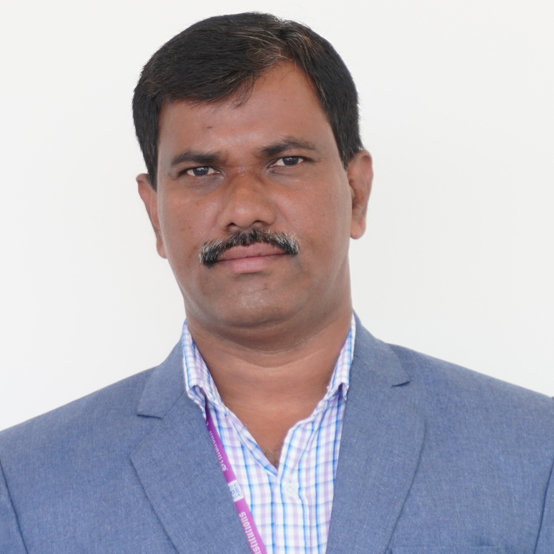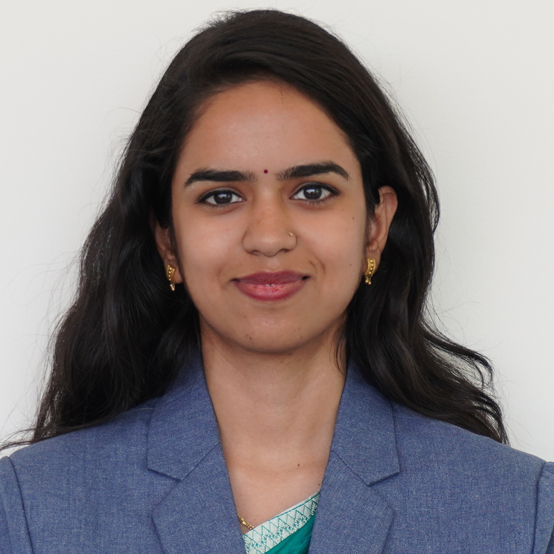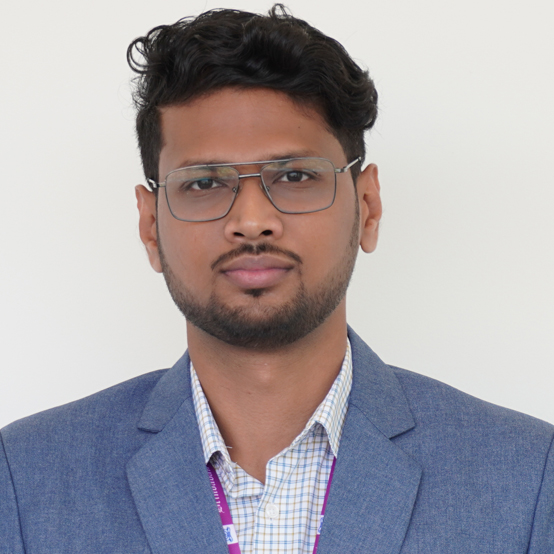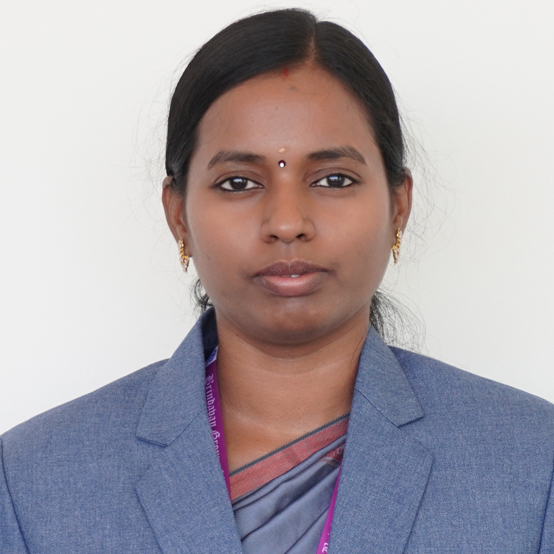Approved by AICTE, Recognised by Govt. and Affiliated to VTU, Accredited ‘A’ level by NAAC.
Dwarakanagar,Bagalur Main Road, Yelahanka, Bangalore-560063
Approved by AICTE, Recognised by Govt. and Affiliated to VTU, Accredited ‘A’ level by NAAC.
Dwarakanagar,Bagalur Main Road, Yelahanka, Bangalore-560063
The Department of Master of Computer Applications (MCA) was started in the year 2012, with an intake of 60 students. The Department of Master of Computer Applications, Brindavan College of Engineering is approved by All India Council for Technical Education (AICTE), recognized by UGC and is affiliated to Visvesvaraya Technological University. Brindavan College of Engineering is also awarded with NAAC “A” grade
In this era of technological explosion, the department is dedicated to maintain a high standard of excellence through quality, technology and innovation. The MCA program seeks to prepare participants for high-level careers in the ever-expanding field of computer applications. It comprises a comprehensive and integrated sequence of courses aiming to develop knowledge and skills in all areas of computer applications.
Imparting knowledge of developing Computer Applications to meet the global business needs and social responsiveness among the students.
POs are statements that describe what students are expected to know and be able to do upon graduating from the program. These relate to the skills, knowledge, analytical ability attitude and behavior that students acquire through the program.
|
PO 1 |
Engineering knowledge : Apply the knowledge of mathematics, science, engineering fundamentals, and computer science and business systems to the solution of complex engineering and societal problems. |
|
PO 2 |
Problem analysis : Identify, formulate, research literature, and analyse complex engineering problems reaching substantiated conclusions using first principles of mathematics, natural sciences, and engineering sciences. |
|
PO 3 |
Design/development of solutions : Design solutions for complex engineering problems and design system components or processes that meet the specified needs with appropriate consideration for the public health and safety, and the cultural, societal, and environmental considerations. |
|
PO 4 |
Conduct investigations of complex problems : Use research-based knowledge and research methods including design of experiments, analysis and interpretation of data, and synthesis of the information to provide valid conclusions |
|
PO 5 |
Modern tool usage : Create, select, and apply appropriate techniques, resources, and modern engineering and IT tools including prediction and modelling to complex engineering activities with an understanding of the limitations. |
|
PO 6 |
The engineer and society : Apply reasoning informed by the contextual knowledge to assess societal, health, safety, legal, and cultural issues and the consequent responsibilities relevant to the professional engineering practice. |
|
PO 7 |
Environment and sustainability : Understand the impact of the professional engineering solutions in societal and environmental contexts, and demonstrate the knowledge of need for sustainable development. |
|
PO 8 |
Ethics : Apply ethical principles and commit to professional ethics and responsibilities and norms of the engineering practice. |
|
PO 9 |
Individual and team work : Function effectively as an individual, and as a member or leader in diverse teams, and in multidisciplinary settings. |
|
PO 10 |
Communication : Communicate effectively on complex engineering activities with the engineering community and with society at large, such as, being able to comprehend and write effective reports and design documentation, make effective presentations, and give and receive clear instructions. |
|
PO 11 |
Project management and finance : Demonstrate knowledge and understanding of the engineering and management principles and apply these to one‘s own work, as a member and leader in a team, to manage projects and in multidisciplinary environments. |
|
PO 12 |
Life-long learning : Recognise the need for, and have the preparation and ability to engage in independent and life-long learning in the broadest context of technological change. |
At the end of the Master of Computer Applications program, students are expected to have developed the following program specific outcomes.
PSO 1: Analyse, design, build and test IOT and Data Analytics models with python Tools.
PSO 2: Understand and Develop network based Applications with Linux and Network
Simulators.
PSO 3: Able to handle and implement any type of complex problems to simplification with
software tools and technologies.
In each Semester a candidate should be considered to have successfully undergone the prescribed Course of study if the candidate has attended at least 85% of the classes in each subject (Theory, Lab & project).
Lectures, Tutorials, Subject related activities, Seminars, Workshops, Guest Lectures, Case Studies, Quiz Competitions, Skill Development activities, Industrial visits, Internships, Coding and debugging, Movie and app making competitions, Web Designing, etc
Quality education at a low cost.
Courses are designed as per industry needs.
High Teaching and Industry experienced staff.
High speed Wi-fi enabled Campus.
Labs are 1:1 computer student ratio with advanced software tools and internet facilities.
Located in IT hub Bangalore city.
Trained students for their minimum Job facility throw CCA and ECA.
Providing value added course/Certificate Course to students based on industry needs.
University Examinations will be held twice in an academic year in Nov/Dec for odd semesters and in the month of May/June for even semesters. And eligible students are allowed to write University exams in regular semester and all the semesters back papers.
Computer Lab
Computer Lab is equipped with forty high configuration Computers and advanced software tools along with Wi-Fi, Internet, LAN, and projector.
Department Club
Student activities like Computation events, Fests, Gaming events, etc are conducted through the Department Club “CLOUD NEON” under the supervision of Club members and faculty.
Library
Library is contented with More the 2500 Computer Books Comprising National and International authors. News Papers like Times of India, The Hindu, Deccan Herald, Indian Express, Bangalore Mirrors, Economics Times, Mint and Vijaya Karnataka Various journal, Magazines, E-Journal – J GATE ( Social Science and Humanities)
Hostel
Full Furnished Boys and Girls Hostel with all facilities and safety measures taken into Consideration
Transportation
We are providing Comfortable buses which help the students and faculty commuting from the various parts of the city. Drivers are well experienced and hired after a complete verification check.
PROGRAM DETAILS
Master of Computer Applications is two years, four semesters program. This program is designed for the students, who want to pursue their career in the field of Computer Applications. The program covers the major areas ranging from fundamentals to the advanced concepts through the subjects offered in the program. Along with programming languages, students are exposed to subjects like Research Methodology & IPR, Soft Skills, Personality Development and Quantitative Techniques. The students develop industry-oriented applications in the form of mini and main projects in second, third and fourth semesters respectively.
Course Matrix
| SL. No | Paper Code | Subjects | Hours per Week | Credits |
|---|---|---|---|---|
| 1 | 20MCA11 | Data Structures with Algorithms | 4 | 4 |
| 2 | 20MCA12 | Operating System with Unix | 4 | 4 |
| 3 | 20MCA13 | Computer Networks | 4 | 4 |
| 4 | 20MCA14 | Mathematical Foundation for Computer Applications | 4 | 4 |
| 5 | 20MCA15 | Research Methodology & IPR | 5 | 2 |
| 6 | 20MCA16 | Data Structures with Algorithms Lab | 4 | 2 |
| 7 | 20MCA17 | Unix Programming Lab | 4 | 2 |
| 8 | 20MCA18 | Computer Networks Lab | 4 | 2 |
| 9 | 20MCA19 | Basics of Programming & CO (Bridge course for Non-Computer Students) |
4 | NA |
| SL. No | Paper Code | Subjects | Hours per Week | Credits |
|---|---|---|---|---|
| 1 | 20MCA21 | Database Management System | 3 | 3 |
| 2 | 20MCA22 | Object Oriented Programming with Java | 3 | 3 |
| 3 | 20MCA23 | Web Technologies | 4 | 4 |
| 4 | 20MCA24 | Software Engineering | 5 | 4 |
| 5 | 20MCA25 | Elective-1 | 3 | 3 |
| 6 | 20MCA26 | Elective-2 | 3 | 3 |
| 7 | 20MCA27 | DBMS Lab | 4 | 2 |
| 8 | 20MCA28 | Java Programming Lab | 4 | 2 |
| 9 | 20MCA29 | Web Technologies Lab with Mini-project | 3 | 2 |
| SL. No | Paper Code | Subjects | Hours per Week | Credits |
|---|---|---|---|---|
| 1 | 20MCA31 | Data Analytics using Python | 4 | 4 |
| 2 | 20MCA32 | IoT | 4 | 4 |
| 3 | 20MCA33 | Advances in Java | 4 | 4 |
| 4 | 20MCA34 | Elective-III | 3 | 3 |
| 5 | 20MCA35 | Elective-IV | 3 | 3 |
| 6 | 20MCA36 | Data Analytics Lab with Mini-project | 4 | 2 |
| 7 | 20MCA37 | IoT Lab with Mini Project | 4 | 2 |
| 8 | 20MCA38 | Advances in Java Lab | 4 | 2 |
| SL. No | Paper Code | Subjects | Hours per Week | Credits |
|---|---|---|---|---|
| 1 | 20MCA41 | Advances in Web Technologies | 4 | 2 |
| 2 | 20MCA42 | Programming using C# | 4 | 2 |
| 3 | 20MCA43 | Industry Internship ( 4 weeks in vacation of 3rd sem.) | - | 2 |
| 4 | 20MCA44 | Project work Phase 2 (During 4th Semester- min. of 4 Months) | 5 | 20 |
| Paper Code | Subjects |
|---|---|
| 20MCA251 | Cyber security |
| 20MCA251 | Data Mining and Business Intelligence |
| 20MCA251 | Enterprise Resource Planning |
| 20MCA251 | User Interface Design |
| 20MCA251 | Optimization Techniques |
| Paper Code | Subjects |
|---|---|
| 20MCA261 | Cryptography and Network Security |
| 20MCA262 | Artificial Intelligence |
| 20MCA263 | Mobile Application Development |
| 20MCA264 | Distributed operating System |
| 20MCA265 | Natural Language Processing |
| Paper Code | Subjects |
|---|---|
| 20MCA341 | Block chain Technology |
| 20MCA342 | Cloud Computing |
| 20MCA343 | Digital Marketing |
| 20MCA344 | Software Testing |
| 20MCA345 | NOSQL |
| Paper Code | Subjects |
|---|---|
| 20MCA351 | Deep Learning |
| 20MCA352 | Big data Analytics |
| 20MCA353 | Wireless Ad Hoc Networks |
| 20MCA354 | Software Project Management |
| 20MCA355 | Software Defined Networks |
| Subject Code | Course Outcomes (CO’s) |
|---|---|
|
20MCA11 |
CO1: Demonstrate different data structures, its operations using C programming. |
|
20MCA12 |
CO1: Analyse the basic Operating System Structure and concept of Process Management |
|
20MCA13 |
CO1: Apply the basic concepts of networking and to analyse different parameters such as bandwidth, delay, throughput of the networks for the given problem. |
|
20MCA14 |
CO1: Apply the fundamentals of set theory and matrices for the given problem. |
|
20MCA15 |
CO1: Identify the suitable research methods and articulate the research steps in a proper sequence for the given problem. |
|
20MCA16 |
CO1: Implement sorting / searching techniques, and validate input/output for the given problem. |
|
20MCA17 |
CO1: Demonstrate the working of basic commands of Unix environment including file processing. |
|
20MCA18 |
CO1: Apply the basic concepts of networking and to analyse different parameters such as bandwidth, delay, throughput of the networks for the given problem. |
|
20MCA19 |
CO1: Demonstrate the key concepts introduced in C programming by writing and executing the programs. |
|
20MCA21 |
CO1: Apply the basic concepts of database management in designing the database for the given problem. |
|
20MCA22 |
<CO1: Demonstrate the basic programming constructs of Java and OOP concepts to develop Java programs for a given scenario. |
|
20MCA23 |
CO1: Apply the features JQuery for the given web based problem. |
|
20MCA24 |
CO1: Identify and define different requirements for the given problem and present in the IEEE format. |
|
20MCA251 |
CO1: Apply IT ACT (Cyber law) to the given case/problem and infer from the given case and analyze the gap if exists. |
|
20MCA263 |
CO1: Develop effective user interfaces that leverage evolving mobile devices |
|
20MCA27 |
CO1: Design entity-relationship diagrams to solve given database applications. |
|
20MCA28 |
CO1: Demonstrate the fundamental data types and constructs of Java Programming by writing executable/interpretable programs. |
|
20MCA29 |
CO1: Apply the concept and usages web based programming techniques. |
|
20MCA31 |
CO1: Demonstrate basic data analytics principles and techniques |
|
20MCA32 |
CO1: Analyse the IoT architecture and design along with functional/compute stack and data management. |
|
20MCA33 |
CO1: Apply the concept of Servlet and its life cycle to create web application. |
|
20MCA342 |
CO1: Demonstrate the system & software models and mechanisms that support cloud computing. |
|
20MCA352 |
CO1: Identify the business problem for a given context and frame the objectives to solve it through data analytics tools. |
|
20MCA36 |
CO1: Develop python program to perform search/sort on a given data set |
|
20MCA37 |
CO1: Demonstrate the IoT architecture design for a given problem. |
|
20MCA38 |
CO1: Apply the concept of Servlet and its life cycle to create web application. |
|
20MCA41 |
CO1: Build the Web Applications using JQuery, PHP, XML for the given problem. |
|
20MCA42 |
CO1: Analyse C#andclient-server concepts using .NetFrameWork Components. |
|
20MCA43 |
CO1: Analyse the real-time industry/research work environment with emphasis on organizational structure/job process/different departments and functions / tools /technology. |

Associate Professor & HoD

Assistant Professor

Assistant Professor

Assistant Professor

Assistant Professor

Assistant Professor
Scheme of Examination
Minimum for pass and declaration of results
Promotion to Second year
Career Opportunities
After completing the course, the students will have ample job opportunities in the field of information technology, business and research areas.